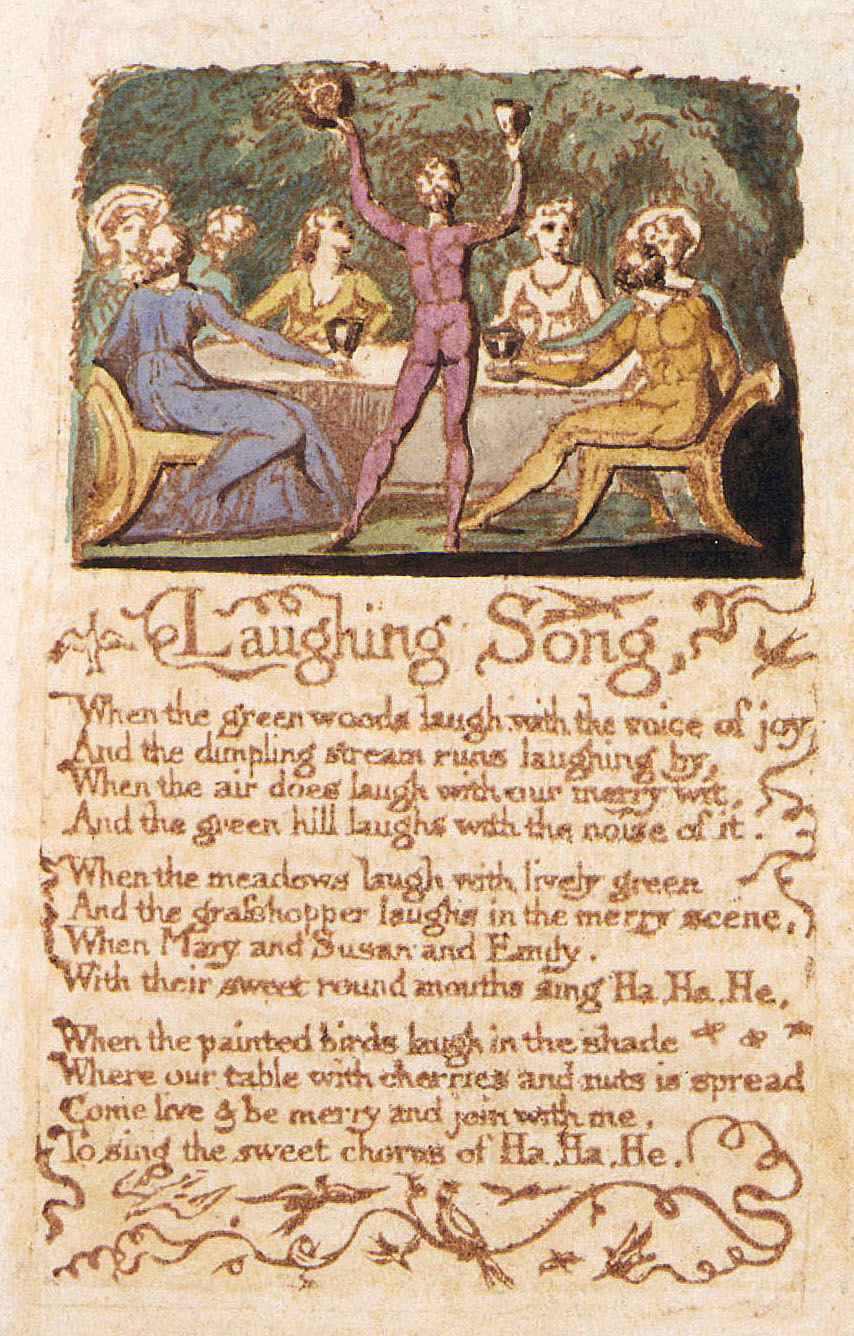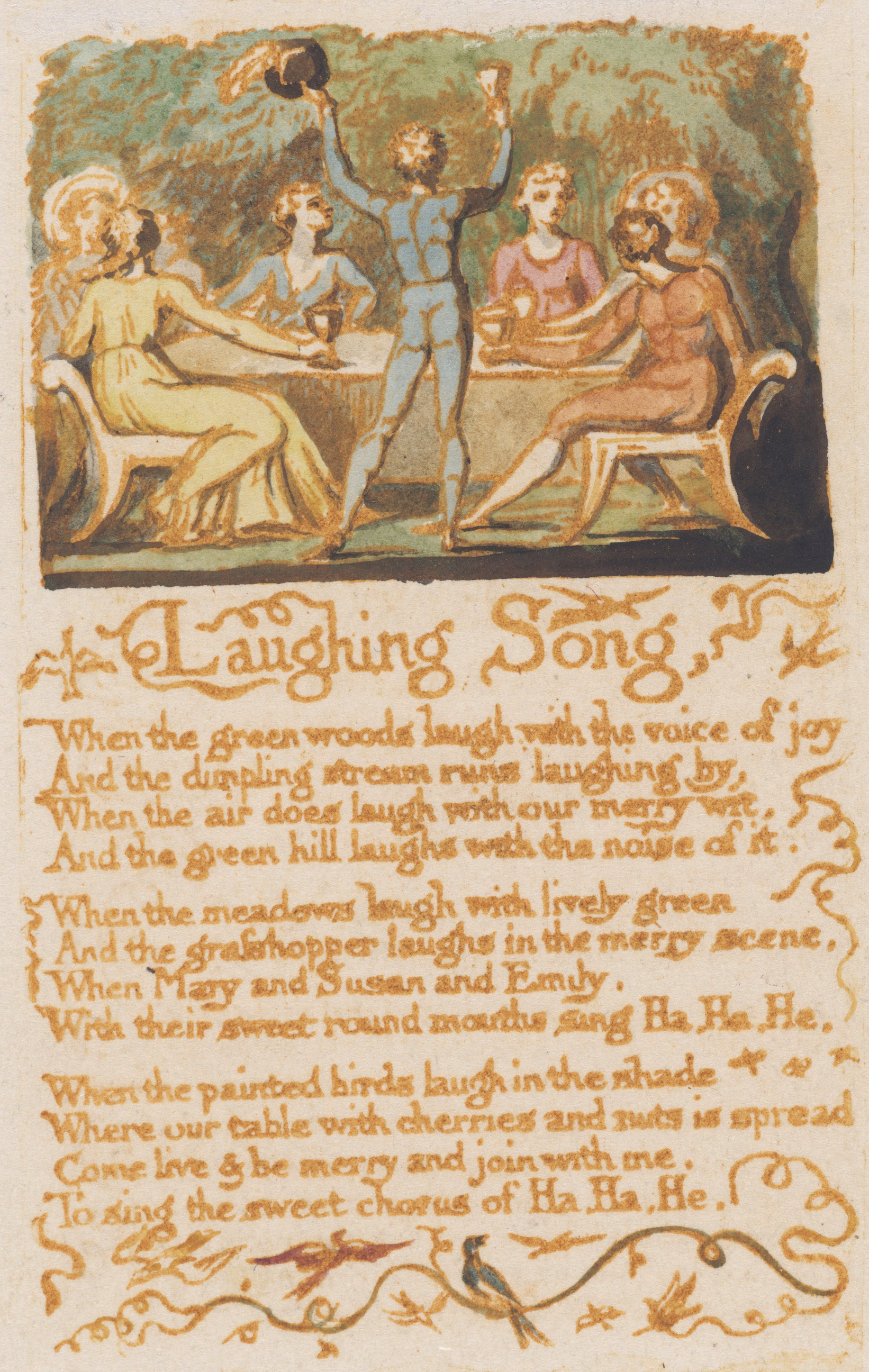The following is a note I left to future scholars and editors exploring copy F of Blake’s Songs of Innocence:
“The woman who, in copy B, sits behind the table, second from the left, is nearly absent in copy F. A shape that may be her right shoulder appears in F, as well as in S-IE C and S-IE R. She is absent from S-Inn L and Z.”
It’s a rationale for altering the notes (or “markup”) associated with each of copy F’s plates. In this instance, copy B is my template for creating copy F’s notes. This is my current work in the Archive: I compare a newly digitized copy of a Blake work with an older counterpart, note the differences, and adjust the records accordingly. If you’ve ever read Highlights magazine, you know exactly what I’m talking about (just swap Blake’s illustrations for forest animals). Usually, the tweaks are minor: an extra tiny animal here, a different border pattern there. The most ubiquitous change is probably the addition of “a rosy wash in the sky indicating sunrise or sunset.” Blake loved sunrises or sunsets.
But sometimes the change is bigger, as in the example from my notes above. The major illustration on this plate—Laughing Song—shows a group of men in tights and women in gowns, sitting or standing around a table and drinking what appears to be wine. See copy B, my template, here:

“Laughing Song,” Songs of Innocence, copy B, p. 10 (Bentley 15).
Notice the woman sitting behind the table, second from the left; her figure is outlined in fine pen. What I don’t mention in my notes (meant to be objective) is the emotion that, for me, radiates from this figure. Observe her posture: she leans slightly forward, her head twisted away from the viewer. She seems to stare into the dark foliage behind the table as if watching something—or expecting something. We see very little of her body below the shoulders, and one could even speculate—not in the notes, of course—that she’s in the midst of getting up from her seat. These details are a little strange, but easily explainable. The woman may not be facing away at all, her face obscured by colored wash. Or maybe Blake just wanted to add a touch of spontaneity to the scene. The difference in copy F, however, was striking:

“Laughing Song,” Songs of Innocence, copy F, p. 8 (Bentley 15).
The woman, it seems, has finished getting up and has left the party. Whatever the reason, we see a fragment of her at best. The woman does appear in the first extant impressions of this plate, so we know she should be there. But the fact remains: in one copy, a woman looks over her shoulder at something unknown, and in another, she is all but gone. And as I later learned, even her last trace—the shape that may be a shoulder—is absent from copy Z. Though these variances are almost certainly the result of mistakes in Blake’s or Mrs. Blake’s coloring, to discover them in my work felt as surreal to me as do any of Blake’s carefully crafted visions. What did Blake imagine this woman’s role to be? Why her strange posture? Was her removal truly a mistake? All of these questions interest me, all are almost impossible to answer, and none make any difference to the sheer oddity of this woman who approaches the vanishing point in some copies and returns in others.
I don’t regret being unable to record these speculations in my notes on these copies. On the contrary, encounters like this reinforce my sense of my role as an editor, a textual curator who (at least sometimes) tries to be objective. By recording details as faithfully as possible, editors can reveal new mysteries for scholars to interpret—though rarely can we find answers.
References:
Blake, William. Songs of Innocence Copy B. Rosenwald Collection, Library of Congress, Washington, DC. 1789.
Blake, William. Songs of Innocence Copy F. Houghton Library, Harvard University, Cambridge, Massachusetts. 1789.
